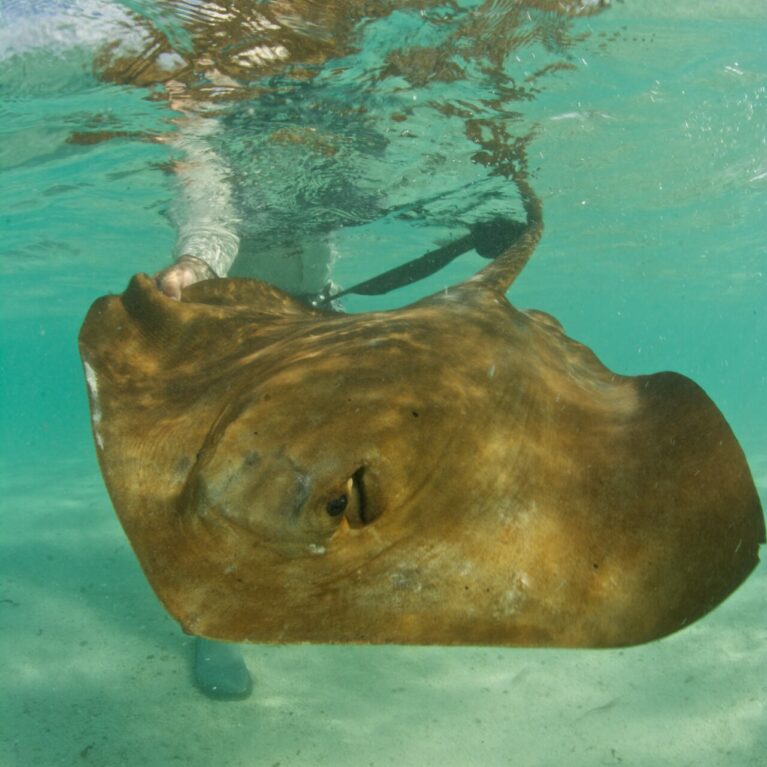A stingray’s story
St Joseph Atoll is a special place in the remote Indian Ocean. It’s home to numerous stingray species, including cowtail, mangrove whiptail and porcupine rays. Chantel is investigating how many of these animals there are, what they eat, where they live and how they move.
I’m one of those lucky people who have always known what I wanted to do in life. Even at the tender age of six, just as I was starting school, I knew I wanted to be a marine biologist when I grew up. I can’t even remember who first told me what a marine biologist does, but I’m sure whoever it was did so because my passion for the ocean has always been obvious.
Perhaps this obsession with the big blue developed from my dad’s love of sailing or from spending countless days at the beach all through my childhood...

The ecology of stingrays in the St Joseph Atoll, Seychelles
The broad aim is to learn about the ecology of the three dominant species of stingrays (cowtail Pastinachus sephen, porcupine Himantura granulate and mangrove Urogymnus asperrimus) in the St Joseph lagoon in order to better manage them.
Stingrays represent an important part of the food web by providing a link between apex predators and lower trophic levels, however, the lack of baseline data for these rays makes it difficult to manage their populations. St Joseph Atoll provides a unique opportunity to address this knowledge gap.
Research on elasmobranchs has increased dramatically in recent years in response to concerns about their population status globally. Despite this, many areas remain under-researched, including the Indian Ocean. The population of stingrays in the St Joseph Atoll has received no scientific attention despite the fact that several species (predominantly cowtail, porcupine and mangrove stingrays) are abundant and ubiquitous in the atoll’s shallow lagoon. Lagoon stingray populations provide the link between apex predators and lower trophic levels.
Over the past two decades, the number of stingrays in the lagoon appears to have declined significantly for unknown reasons. In order to manage these rays effectively, baseline ecological data about population demographics, diet composition and movement are required. Previous studies have produced estimates of size, age at maturity and sex ratios for these species in other areas, but these estimates are population-specific. Although it is not known what these rays feed on at St Joseph, they are known to eat small bony fish and bottom-dwelling crustaceans throughout their range. Observations of the stingrays in the St Joseph lagoon reveal that they are present on the shallow reef flats during high tide, but they retreat to cooler areas of the lagoon or reef slope during low tide when parts of the reef flats are exposed and get warmer. Apart from these preliminary observations, the habitat use and movements of these stingrays have not been studied.
The aims and objectives of this project are to:
- Determine the population demographics of the three predominant species in the St Joseph lagoon: cowtail, porcupine and mangrove stingrays.
- Determine the diet of cowtail, porcupine and mangrove stingrays.
- Determine the habitat use and movement of the porcupine stingray using acoustic tracking.

